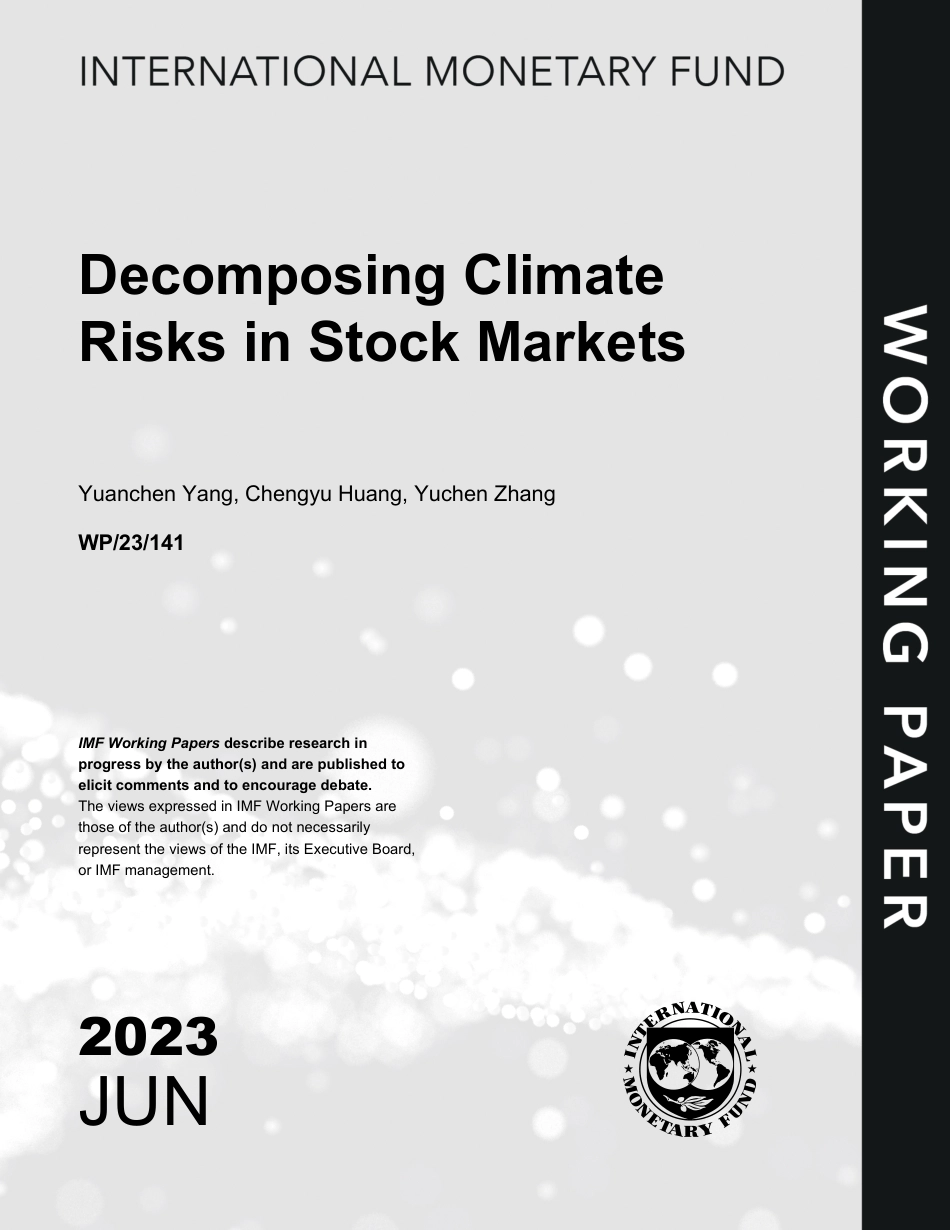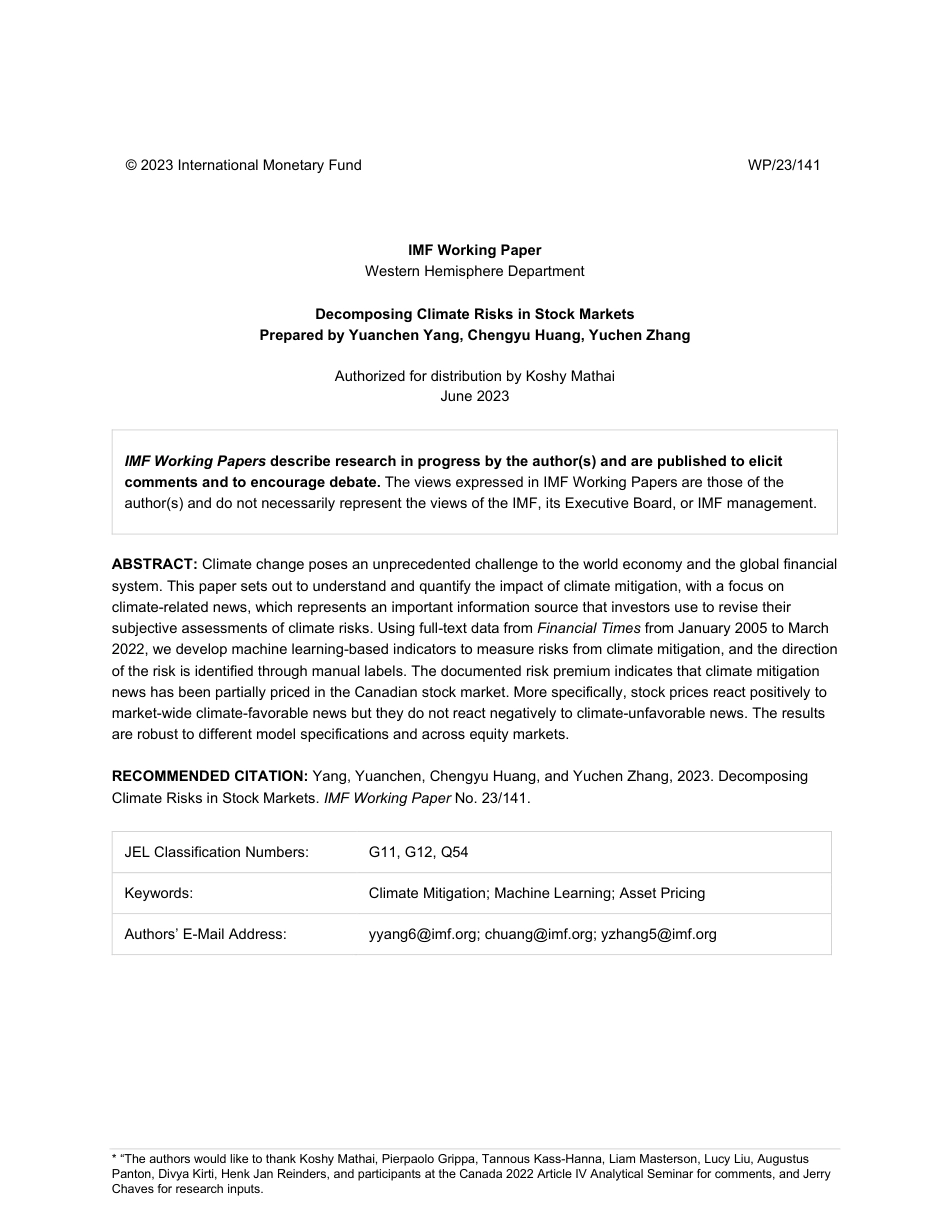Decomposing Climate Risks in Stock Markets Yuanchen Yang, Chengyu Huang, Yuchen Zhang WP/23/141 IMF Working Papers describe research in progress by the author(s) and are published to elicit comments and to encourage debate. The views expressed in IMF Working Papers are those of the author(s) and do not necessarily represent the views of the IMF, its Executive Board, or IMF management. 2023 JUN * “The authors would like to thank Koshy Mathai, Pierpaolo Grippa, Tannous Kass-Hanna, Liam Masterson, Lucy Liu, AugustusPanton, Divya Kirti, Henk Jan Reinders, and participants at the Canada 2022 Article IV Analytical Seminar for comments, and JerryChaves for research inputs.© 2023 International Monetary Fund WP/23/141IMF Working Paper Western Hemisphere Department Decomposing Climate Risks in Stock Markets Prepared by Yuanchen Yang, Chengyu Huang, Yuchen Zhang Authorized for distribution by Koshy Mathai June 2023 IMF Working Papers describe research in progress by the author(s) and are published to elicit comments and to encourage debate. The views expressed in IMF Working Papers are those of the author(s) and do not necessarily represent the views of the IMF, its Executive Board, or IMF management. ABSTRACT: Climate change poses an unprecedented challenge to the world economy and the global financial system. This paper sets out to understand and quantify the impact of climate mitigation, with a focus on climate-related news, which represents an important information source that investors use to revise their subjective assessments of climate risks. Using full-text data from Financial Times from January 2005 to March 2022, we develop machine learning-based indicators to measure risks from climate mitigation, and the...



